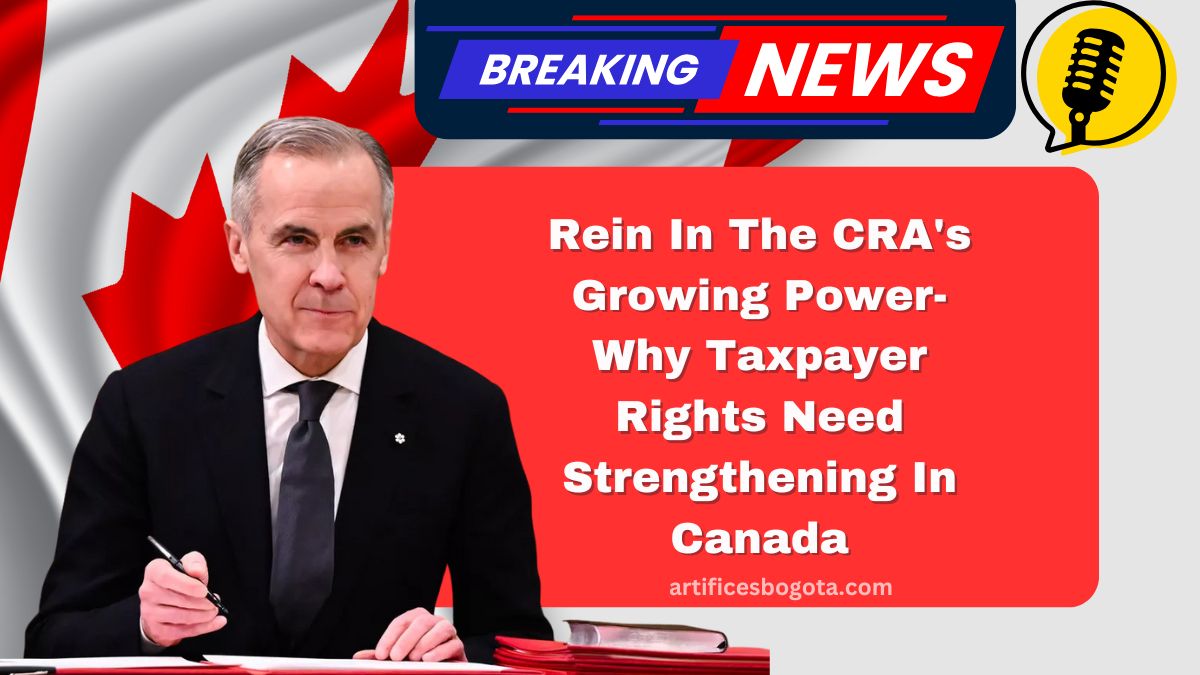The Canada Revenue Agency (CRA) has seen significant growth over the past few years, increasing its staff and expanding its reach.
While the CRA’s role in enforcing tax laws is critical, concerns have emerged over the agency’s increasing power and its approach toward taxpayers.
This article explores a recent case highlighting the challenges many face when dealing with the CRA’s and why there is a pressing need to strengthen protections for taxpayers.
The Case of Amarpal Singh: An Example of CRA’s Overreach
In a recent case, Amarpal Singh, a real estate agent from British Columbia, found himself at odds with the CRA over a tax discrepancy.
His personal corporation received an amended tax slip showing a slight increase in income. Instead of adjusting the tax based on the amended slip, the CRA mistakenly combined the two amounts, leading to an inflated income assessment.
| Issue | Details |
|---|---|
| Tax Discrepancy | CRA received two different income amounts for the same period. |
| CRA Action | Instead of using the updated slip, CRA’s combined both amounts. |
| Resulting Tax Assessment | The CRA’s assessed taxes on a total of $108,000, despite the error. |
| Formal Objection | Corporation failed to file a timely objection within the 90-day window. |
| Court Decision | Court ruled in favor of the CRA due to missed deadlines. |
Mr. Singh’s situation underscores the imbalance between the CRA’s power and taxpayer rights. Although the corporation could request a remission order to address the overpaid taxes, it is not guaranteed, and the process is cumbersome.
Why Is the CRA Becoming Too Powerful?
Over the last few years, the CRA’s budget and staff have expanded significantly. From under 40,000 employees in 2016, the CRA now employs close to 60,000 individuals. This growth is largely due to an increasing focus on maximizing tax collection and enforcing the tax code.
However, this has led to some troubling trends, including:
- Premature Tax Assessments: Many tax auditors issue assessments without resolving disputes, leaving it to taxpayers to challenge the decisions.
- Increased Enforcement Powers: The government has provided the CRA with additional powers, such as compelling taxpayers to answer questions under oath.
This expansion of power has shifted the balance of tax administration, with the CRA holding more authority over individual and corporate taxpayers.
Taxpayer Rights: The Need for Stronger Protections
Canada’s Taxpayer Bill of Rights, first introduced in 2007, outlines the basic rights of taxpayers. These include the right to pay no more or no less than what is required by law and the right to privacy and confidentiality.
However, these rights are merely administrative guidelines, lacking the legal standing to protect taxpayers when disputes arise.
| Key Rights | Current Issue |
|---|---|
| Right to Fair Assessment | Missed deadlines for objections can negate a fair assessment. |
| Right to Privacy | Taxpayers can be compelled to testify under oath during audits. |
| Right to Correct Information | The burden of proof often falls on the taxpayer, not the CRA. |
Many individuals and small businesses are at a disadvantage when disputes arise, as the CRA has the resources to push through assessments while taxpayers are left to navigate complex appeal processes.
Without clear, enforceable taxpayer rights in the tax code, Canadians continue to face challenges in ensuring fair treatment.
The Need for Legislative Change
To address these growing concerns, Canada needs to legislate stronger taxpayer rights within the tax code. Some potential changes could include:
- Unrestricted Objection Rights: Allowing taxpayers to object to assessments at any time if they are a result of CRA errors.
- Burden of Proof on the CRA: Shifting the responsibility to prove the correct amount of tax owed onto the CRA, rather than on the taxpayer.
- Limit on Enforcement Powers: Restricting the CRA’s ability to compel testimony under oath for routine audits.
Such reforms would restore balance to the tax system, ensuring that the CRA can effectively enforce tax laws while also protecting the rights of taxpayers.
How Does This Impact Canadians?
For Canadians dealing with the CRA, the growing imbalance between the agency’s power and taxpayer rights can lead to:
- Unfair Tax Assessments: Taxpayers may find themselves penalized for mistakes that were not their fault.
- Time and Financial Strain: Disputing incorrect assessments can be time-consuming and costly, particularly for small businesses and individuals with limited resources.
- Erosion of Trust in the Tax System: When taxpayers feel powerless against a growing and unchecked CRA, trust in the system diminishes.
While the CRA plays a crucial role in enforcing tax laws, the power it wields over Canadian taxpayers has grown to concerning levels.
It is crucial for legislative changes to ensure that taxpayers’ rights are adequately protected. By revising the Taxpayer Bill of Rights to include enforceable protections, Canada can ensure a fairer, more balanced tax system for all.
FAQs
Why has the CRA become more powerful?
The CRA’s power has grown due to increased staffing and a focus on maximizing tax collection, resulting in more aggressive enforcement.
What can be done if a tax assessment is incorrect?
Taxpayers have 90 days to object to the assessment, but failure to do so within this period could result in the loss of the right to challenge the decision.
How can taxpayers ensure fair treatment from the CRA?
Taxpayers should ensure all their information is accurate, file objections promptly, and advocate for stronger legal protections to ensure fair treatment.




